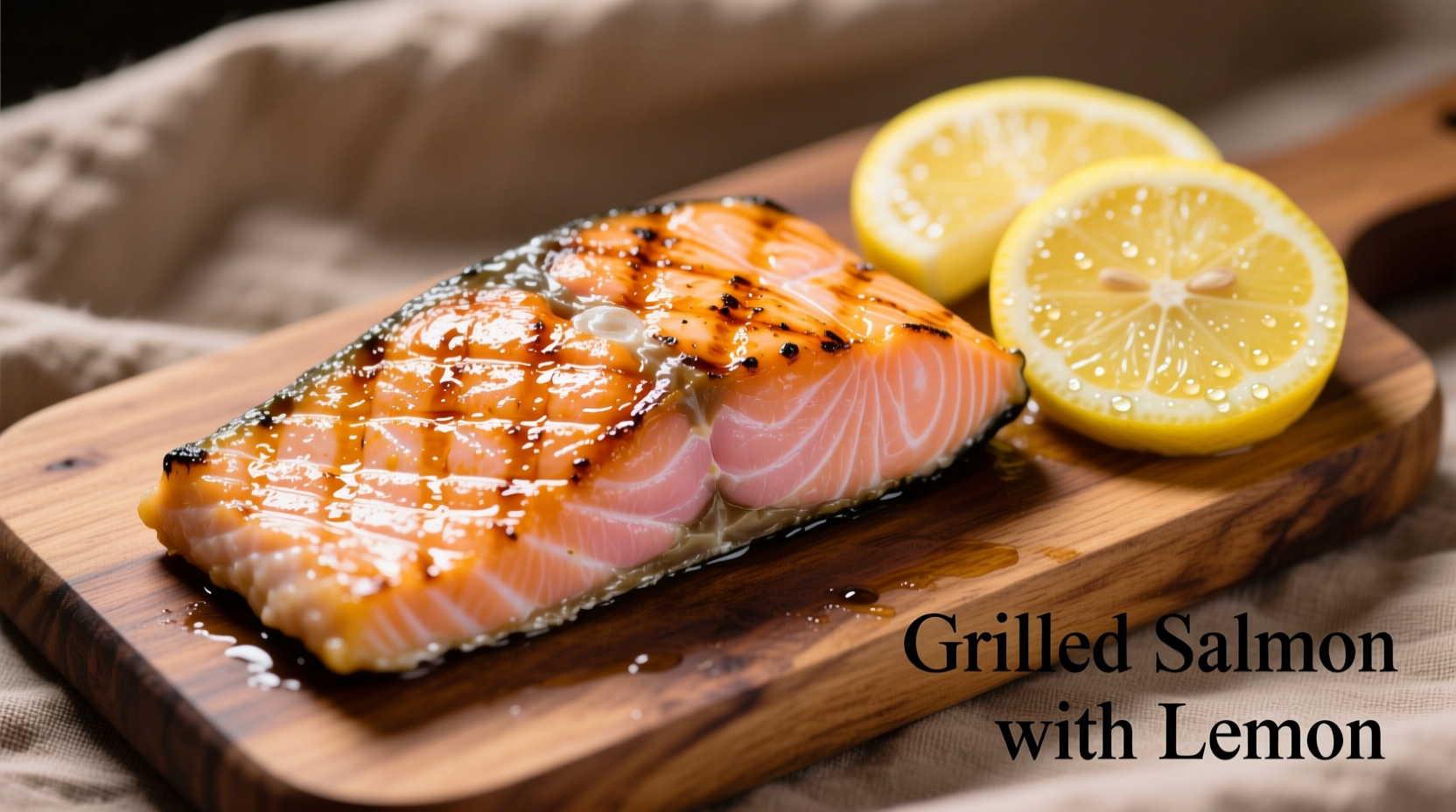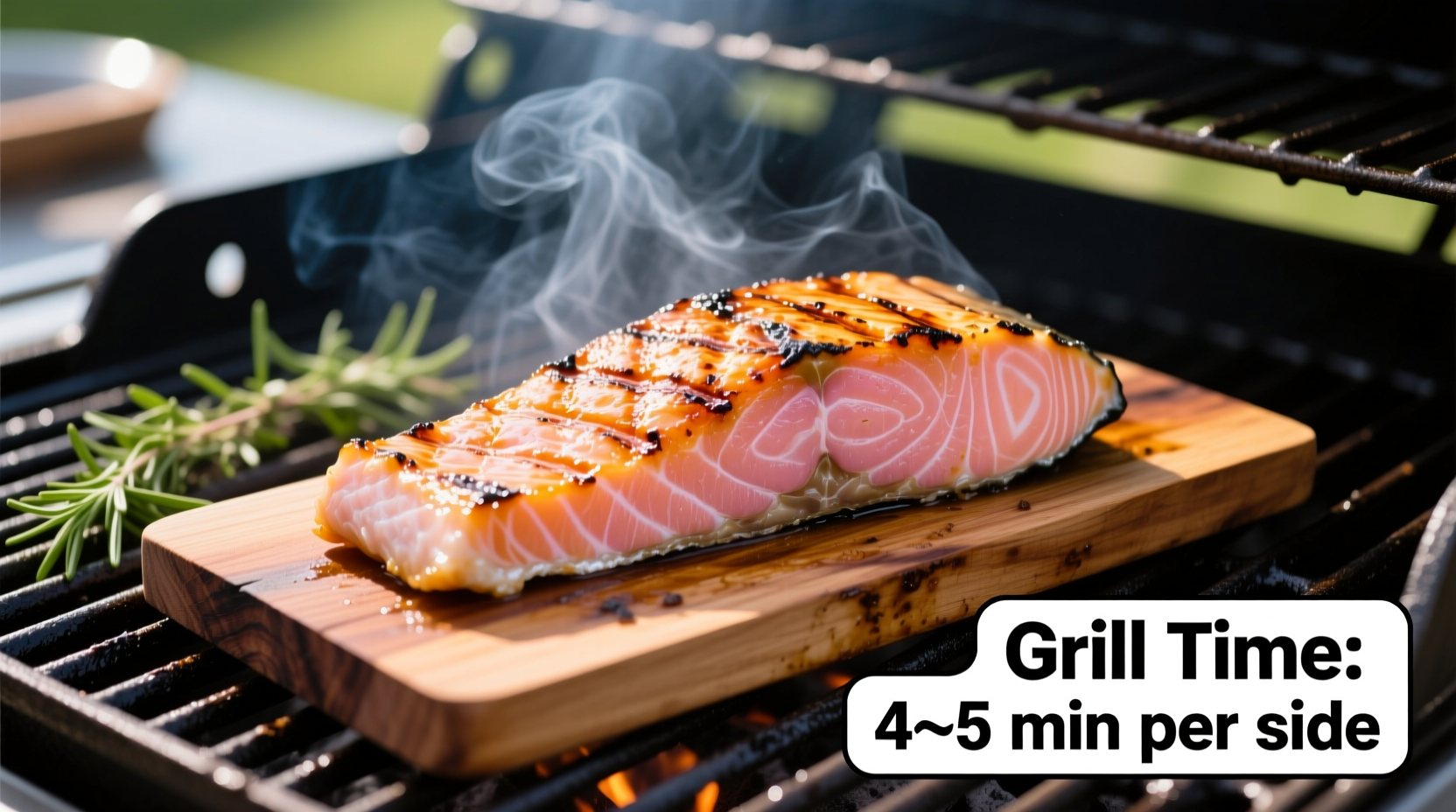Grill salmon for 8-10 minutes total for 1-inch thick fillets, flipping once halfway through. Cook until internal temperature reaches 145°F (63°C) or the flesh flakes easily with a fork. Factors like grill temperature, salmon thickness, and whether it's skin-on affect exact timing.
Master the Art of Grilling Perfect Salmon Every Time
Grilled salmon should be moist, flavorful, and cooked to perfection—not dry and overdone. Getting the timing right separates good grilled salmon from restaurant-quality results. This guide delivers precise cooking times based on scientific food safety standards and professional chef techniques, so you can consistently achieve flaky, flavorful salmon that impresses.Why Proper Cooking Time Matters for Salmon
Salmon's delicate texture means even 60 seconds too long on the grill can transform it from succulent to dry. Unlike chicken or beef, salmon continues cooking after removal from heat (carryover cooking), making precise timing critical. The USDA Food Safety and Inspection Service confirms that fish reaches safe doneness faster than other proteins, requiring careful monitoring to avoid overcooking while ensuring food safety.Preparing Your Salmon for Success
Before you even fire up the grill, proper preparation sets the stage for perfect timing:- Dry the surface thoroughly with paper towels—moisture creates steam instead of sear
- Bring to room temperature for 15-20 minutes before grilling for even cooking
- Oil the fish, not the grill—brush oil directly on salmon to prevent sticking
- Season simply with salt, pepper, and lemon—complex rubs can burn at high heat

Grill Setup: The Foundation for Accurate Timing
Your grill configuration directly impacts cooking duration. For consistent results:- Preheat to medium-high heat (375-400°F)
- Create two-zone cooking—direct heat for searing, indirect for finishing
- Clean and oil grates thoroughly to prevent sticking that disrupts timing
- Keep the lid closed except when flipping to maintain consistent temperature
| Salmon Thickness | Direct Heat Time | Total Cooking Time | Internal Temperature |
|---|---|---|---|
| ½ inch | 3-4 minutes per side | 6-8 minutes | 140-145°F |
| ¾ inch | 4-5 minutes per side | 8-10 minutes | 140-145°F |
| 1 inch | 5-6 minutes per side | 10-12 minutes | 140-145°F |
| Skin-on fillet | 6-8 minutes skin-side down, 2-3 minutes flesh-side | 8-11 minutes | 140-145°F |
The Exact Grilling Process: Timing Breakdown
Follow these precise timing steps for foolproof results:- Place salmon skin-side down (if skin-on) or presentation side down on direct heat zone
- Cook undisturbed for 75% of total time (e.g., 6-8 minutes for 1-inch fillet)
- Flip only once using a wide spatula—frequent flipping disrupts cooking rhythm
- Move to indirect heat for remaining time to prevent exterior burning
- Check temperature 2 minutes before expected finish time
Doneness Indicators Beyond Timing
While timing provides a framework, these visual and tactile cues confirm perfect doneness:- Color change: Translucent pink becomes opaque salmon color throughout
- Flake test: Gently press with fork—should separate into clean flakes but remain moist
- Internal temperature: 140-145°F (60-63°C) measured at thickest part
- Resistance: Slight spring-back when pressed, not mushy or hard
Troubleshooting Common Timing Issues
Even with perfect timing guidelines, these situations require adjustment:- Sticking to grates: Wait 30 seconds longer before attempting to flip—salmon releases naturally when seared
- Flare-ups: Move to indirect heat immediately and reduce total cooking time by 2 minutes
- Cold weather grilling: Add 2-3 minutes total cooking time in temperatures below 50°F
- Thick center, thin edges: Position thinner edge toward cooler part of grill
Resting and Serving for Maximum Juiciness
Never skip this critical step that affects perceived cooking success:- Rest grilled salmon 5 minutes tented with foil before serving
- This allows juices to redistribute, adding perceived moisture
- Serving immediately after grilling causes juices to run out onto the plate
- Chefs at top seafood restaurants universally follow this practice for optimal texture
Advanced Timing Adjustments for Different Grills
Your equipment affects precise cooking duration:- Gas grills: Most consistent heat—follow standard timing guidelines
- Charcoal: Add 1-2 minutes total time due to radiant heat from coals
- Smoker: At 225°F, cook 15-20 minutes until 145°F internal temperature
- Plank grilling: Add 2-3 minutes as wood insulates the fish











 浙公网安备
33010002000092号
浙公网安备
33010002000092号 浙B2-20120091-4
浙B2-20120091-4